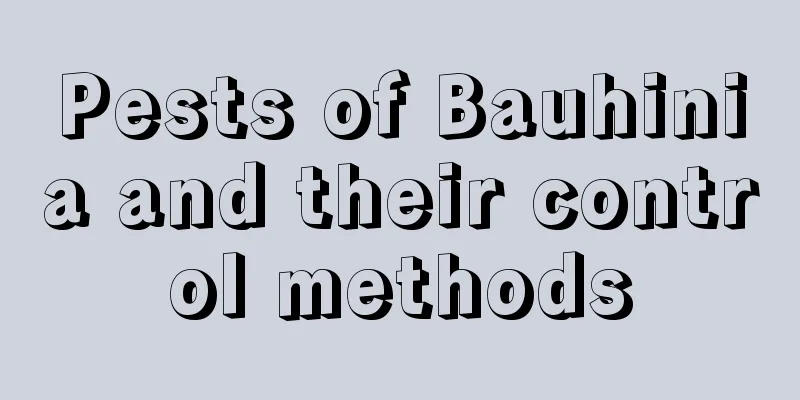Pests of Bauhinia and their control methods

Pests of Bauhinia: Big MothsymptomThe adult moth emerges in the afternoon, and the male moths prefer to be active in the evening or early morning. The larvae usually feed on the egg shells in the afternoon 1-2 days after hatching, then climb onto branches or leaves or float to nearby branches and leaves, spin silk to stick to broken leaves to build a protective sac and begin to feed. The larvae in the protective sacs bite leaves, tender shoots, or peel the bark of branches and fruits, which may cause the complete loss of branches and leaves in some areas and lead to the death of the plant. Prevention and treatment methodsCheck the Bauhinia regularly, remove the cysts promptly if found, and burn them in batches. When the larvae are in their early stages, spray 800-1000 times diluted 90% crystalline trichlorfon or 1200 times diluted 80% DDT emulsifiable concentrate, 1000 times diluted 50% carbofuran emulsifiable concentrate, 1500 times diluted 50% phoxim emulsifiable concentrate, 1200 times diluted 90% badan wettable powder, or 4000 times diluted 2.5% cypermethrin emulsifiable concentrate. Pests of Bauhinia: Brown-margined Green MothsymptomThe larvae feed on leaves. Young larvae feed on the leaf pulp, leaving only the epidermis. Old larvae eat the leaves into holes or notches, sometimes leaving only the petioles, which seriously affects the vigor of the tree. The adults are active at night and are attracted to light. During the day, they hide among branches and leaves, in grass or under other coverings. The brown-edged green moth lays eggs in two ways: in blocks or scattered on the back of leaves. Prevention and treatment methodsIn autumn and winter, water the Bauhinia with antifreeze water and dig up the overwintering cocoons in the shallow soil around the plant. If the disease is relatively mild, the insect leaves need to be cut off in time. In the early stage of larvae, spray with 1000 times concentration of insecticides such as DDT, DDT, and Fenpyrotide. Pests of Bauhinia: AphidssymptomAphids are the fastest reproducing insects, and can reproduce 10 to 30 generations a year. Female aphids can reproduce from birth and do not need males to reproduce. Aphids use their mouth needles with sucking mouths to pierce the epidermis of plants and suck the juice from the tender leaves of the plants, causing the plants to grow slowly. The secretions of aphids also attract ants. Prevention and treatment methodsIf the number is small, kill them manually and spray them with 1500 times diluted 80% DDT emulsion in the initial stage. |
<<: Common pests of Dendrobium officinale and their control methods
>>: Common pests of monkey orchid and their control methods
Recommend
Is Guizhou suitable for growing litchi trees? Can they survive and bear fruit in Guizhou?
Can litchi trees be planted in Guizhou? Guizhou i...
How to repot and prune potted hydrangea
Repotting method Potted hydrangeas usually need t...
Purple Bean Planting Time and Method
Purple bean planting time When planting purple be...
How to grow garlic and what fertilizer is good for growing garlic
1. How to plant 1. Time: Garlic planting requires...
Is Murraya suitable for deep or shallow pots?
Should I use a deep or shallow pot for myrrh? Osm...
What is the best fertilizer for Wisteria?
Wisteria fertilization time Wisteria should be fe...
Breeding methods and precautions of Golden Kylin
1. Soil It is recommended to choose a medium with...
Diseases and Pests of Julan and Their Control
Common diseases of Julan and their control When g...
How much is the yield of green onions per mu? How much is the profit of growing green onions per mu?
Onion yield per mu Under normal circumstances, th...
Is it necessary to water garlic during the winter?
Like overwintering crops such as garlic and wheat...
When does chamomile bloom?
1. Flowering time Generally speaking, chamomile w...
What to do if tulips don't sprout
Reasons for not germinating Not enough depth It i...
Green Yuanbao breeding methods and precautions
1. Breeding methods Temperature and light Tempera...
When is the best time to plant camellia?
Camellia is a flower plant with large flowers. It...
When is the best time to sow aster?
Aster sowing time Aster belongs to the genus Aste...









